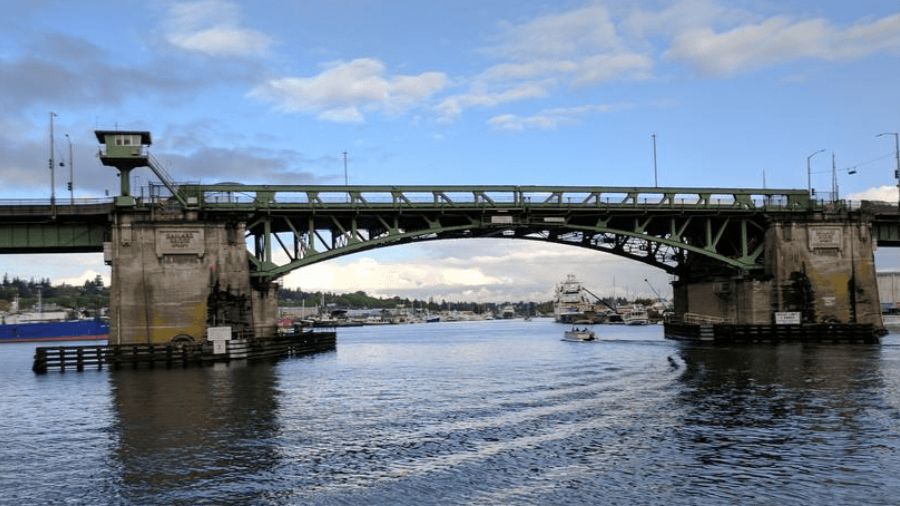Massive change coming for drivers between I-90 and I-5 in Seattle
Nov 2, 2023, 7:38 AM | Updated: 9:29 am

The new metered lights between I-5 and I-90 (Photo from Chris Sullivan)
(Photo from Chris Sullivan)
The need for last-second dangerous merging and lane changing is almost over between Interstate 90 and northbound Interstate 5 in Seattle. The ramp meters in those lanes go active in less than two weeks.
Tuesday, Nov. 14, is the day the red lights turn on in the collector-distributor lanes that manage the northbound I-5 Seattle exits and the connection from I-90, the (WSDOT) announced.
More Chokepoints: Light rail trains begin testing between Bellevue and Redmond
Three ramp meters will manage the flow of cars onto northbound I-5 starting with the morning commute.
“The plan to use them is they’re going to turn on as the morning commute starts to build, and they’re going to stay on through the day, through the evening commute, and as that starts to dissipate they’re going to turn off,” WSDOT spokesperson Amy Moreno said.
Traffic engineers decided it was best to keep them on all day.
“Looking at the data, they decided that was the best idea, and really, sometimes I think many of us will find there is traffic in the middle of the day on I-5,” Moreno said. “The engineers decided the best modeling was to keep it on throughout the day.”
Engineers and other WSDOT staff can tweak the signal timing in real time to change the meters as needed.
“Those ramp meters are being monitored by staff in our Transportation Management Center, and they’ll be watching them, looking at how they work, looking at how the traffic is responding to them, and they’ll be able to respond accordingly,” Moreno said.
These meters are the final piece of the year-long project to improve traffic flow in the daily chokepoint.
WSDOT extended the lane at Seneca to add capacity. New variable speed and message signs are going up. Moreno said there is just one goal.
“We are trying to make traffic move through this area in a better way, in a smarter way,” she said. “We’re working within our own footprint right there and trying to manage that traffic better. We want people to understand that these ramp meters are better traffic management.”
But let’s be honest, ramp meters do not have a good rep. The data, Moreno said, shows that metering works.
“Research in both Washington State and nationally has shown that ramp meters create gaps between drivers,” she said.
“Those gaps make it easier for cars to merge and the cars keep moving faster overall. It’s sometimes hard for people to see because they see a red light.” Moreno continued. “What they don’t realize is they might get where they’re going quicker because of the ramp meter.”
We’ll see how that bears out, but the meters at Mercer have had a positive impact on congestion. Moreno expects the first few days to be rough, but she expects drivers will adjust.
“It will be a change for drivers, and we understand that change is difficult,” she said. “We just want people to realize that in the long run, this is safer for everybody on the road, and it is better traffic management. It helps control the flow of traffic.”
There will also be a new ramp meter from Cherry Street to northbound I-5 to help complete the project. It goes active the same day.
You have less than two weeks to mentally prepare for this to happen.
Check out more of Chris’ Chokepoints.












